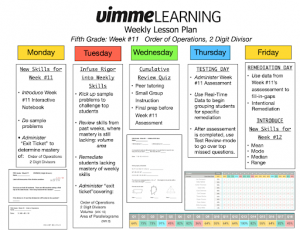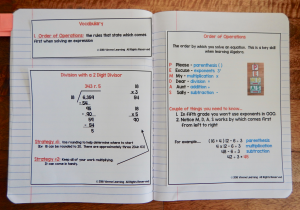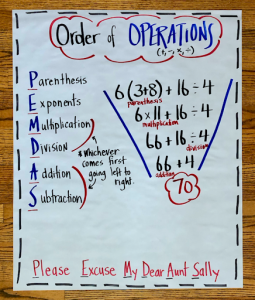Time management in the classroom can be tricky, even for the most seasoned of math teachers. Keeping your class on track for the standardized test can feel like a far-off concern when you’re in the weeds day by day and week by week.
As teachers, we know that our students thrive when there is a consistent, reliable structure in place in our classroom — and it makes our jobs a lot less stressful, too! We developed Vimme Learning to provide a daily and weekly structure for your classroom. It’s proven to be a winning formula for math teachers from kindergarten through pre-algebra.
Weekly lesson plans and yearly pacing guides
Vimme’s lesson plans provide structure for every week and every day in your math classroom.
Whether you build them yourself, borrow them from a peer, or find them online, lesson plans lay the foundation for your time in the classroom. Vimme Learning’s curriculum is centered around weekly lesson plans that give you an in-depth look at every single day of the semester.
Each weekly lesson plan helps you introduce a new math skill, infuse rigor into the lesson, test the mastery of those skills and remediate based on real-time data. Here’s how Vimme structures your week into predictable, productive lessons:
- Monday: New Skills — On the first day of the school week, you and your students will dive into a new math skill or concept. Rather than rote memorization, Vimme approaches the lesson from a variety of angles including long-form story problems. By the end of the week, you’ll be pleased to see how your students are able to apply those skills with confidence.
- Tuesday: Infuse Rigor — With the basic foundations of the new skill in place, it’s time to kick the lesson into high gear. Vimme naturally infuses rigor into your lesson plan to test mastery of new skills and ones from previous weeks. This approach challenges your top achievers while exposing learning gaps for students who need additional assistance.
- Wednesday: Review — In our years of teaching, we’ve found that one of the best ways for students to lock in new skills is to put them in the role of teacher. On Wednesdays, Vimme encourages students to break into small groups where they can work through problems as peers. The work they do during review day will prepare them for the cumulative assessment.
- Thursday: Testing — Your students have been hard at work this week learning a new skill, and now it’s time to put their mastery to the test. Vimme’s cumulative assessments are administered online and give you real-time feedback as students submit their answers. That data is an invaluable tool to uncover areas of mastery, as well as identify concepts in need of remediation.
- Friday: Remediation and Introduction of New Skills — On the final day of the week, you will use data from the cumulative assessment to fill in gaps in learning. You can go over problem areas as an entire class, or break into small groups based on specific problem areas. To cap off the week, you’ll briefly touch on the skills that will be covered the following Monday so students are prepared to hit the ground running.
Pacing guides lay out each week of the school year, including the concepts and academic standards you’ll cover in your classroom.
As you work through each weekly lesson plan, you’ll cover critical academic standards that will show up on the standardized test. Each grade level has a pacing guide that highlights the skills you’ll teach each week, and the standards those skills relate to.
Pacing guides are Vimme’s way of holding our curriculum accountable for the real-life applications your students will need to succeed in their academic careers — and a simple way for you to know that your lessons are having a meaningful impact.
Interactive notebooks and anchor charts
Interactive notebooks consolidate vocab, examples and strategies together with your students’ own notes.
A lesson plan is only as good as the resources that accompany it. As you follow along with Vimme’s lesson plan day by day, you’ll have access to a library of resources that help your students understand and apply complex math skills.
Among those resources are Vimme’s interactive notebooks. These are simple worksheets that introduce vocabulary, walk through the process of solving a problem and show the work that got to the correct answer, and offer helpful hints for approaching the concept.
Your students will cut and paste these worksheets into a small notebook — essentially building their own textbook day by day. But unlike a traditional textbook, students are free to mark up their interactive notebooks as they see fit. They can access the official class notes along with their own notes in one place.
Another resource that accompanies Vimme’s weekly lesson plans is anchor charts. Teachers of all subjects have been using anchor charts as handy classroom tools for decades. They’re by no means a recent innovation, but we’ve found that anchor charts are still an incredibly effective learning tool in the modern math classroom.
Some anchor charts use mnemonic devices to help students remember fundamental concepts, like PEMDAS for order of operations.
Anchor charts provide a visual framework for problem-solving. They walk students step by step through vocab, rules, equations, and other critical concepts. By referencing an anchor chart, students can visualize the steps they need to take to complete their coursework — and ultimately become empowered to work through problems without teacher assistance.
Each weekly lesson plan for Vimme includes anchor charts for the week ahead, but how you use them afterward is up to you. They can stay up in the classroom for the whole semester, or be stored away and brought out when needed. Since Vimme gives you real-time data on your students’ performance, pulling out a specific anchor chart on review day can help your class work through problem areas.
Vimme Learning gives you structure for your week as a math teacher and gives your class structure for learning math. And with our no-strings-attached trial, you can see if that structure works in your classroom with no obligation.
You’ll get six weeks’ worth of lesson plans, interactive notebooks, anchor charts, and more to help guide your time in the classroom. See why math teachers trust Vimme to set the pace for their lessons by giving it a try today.





